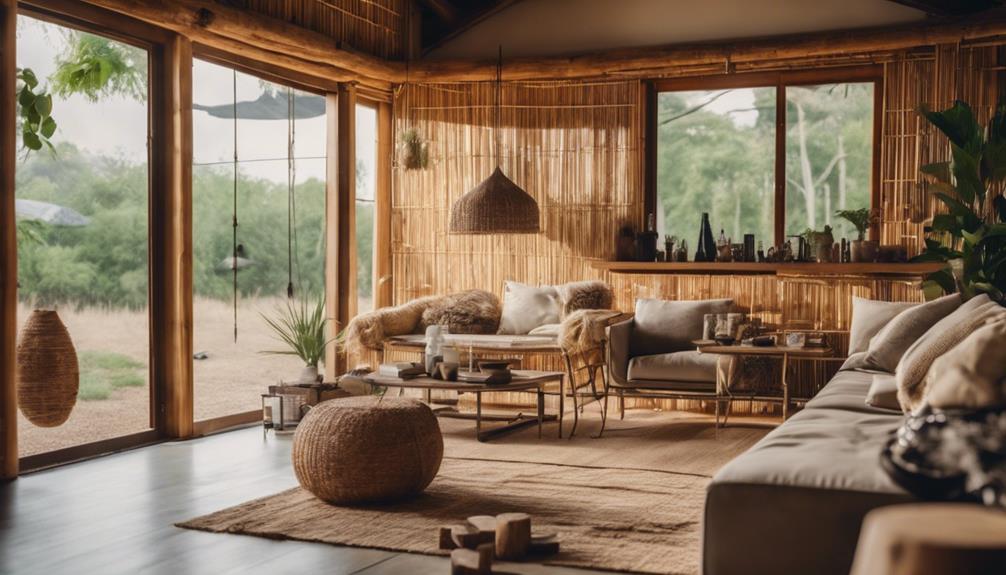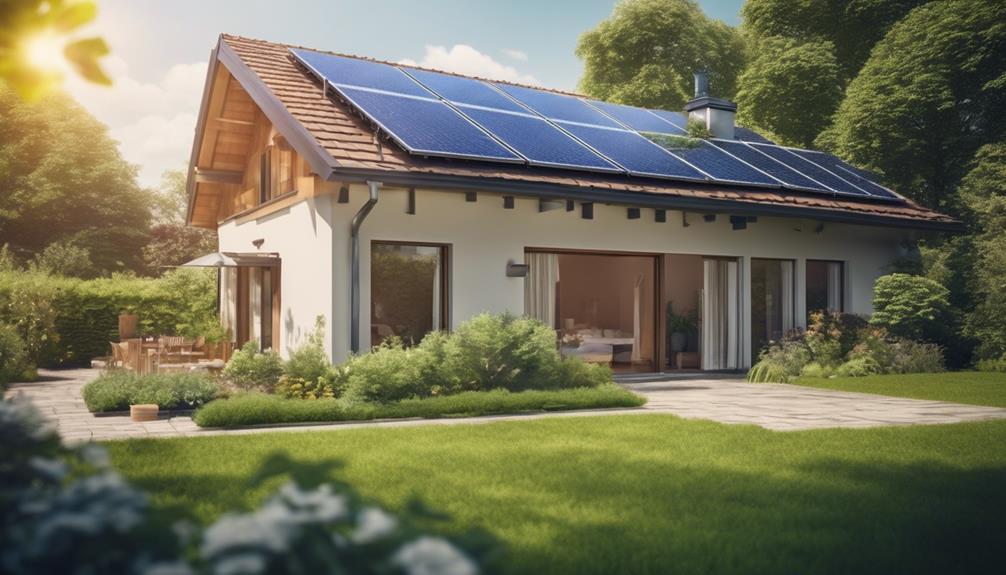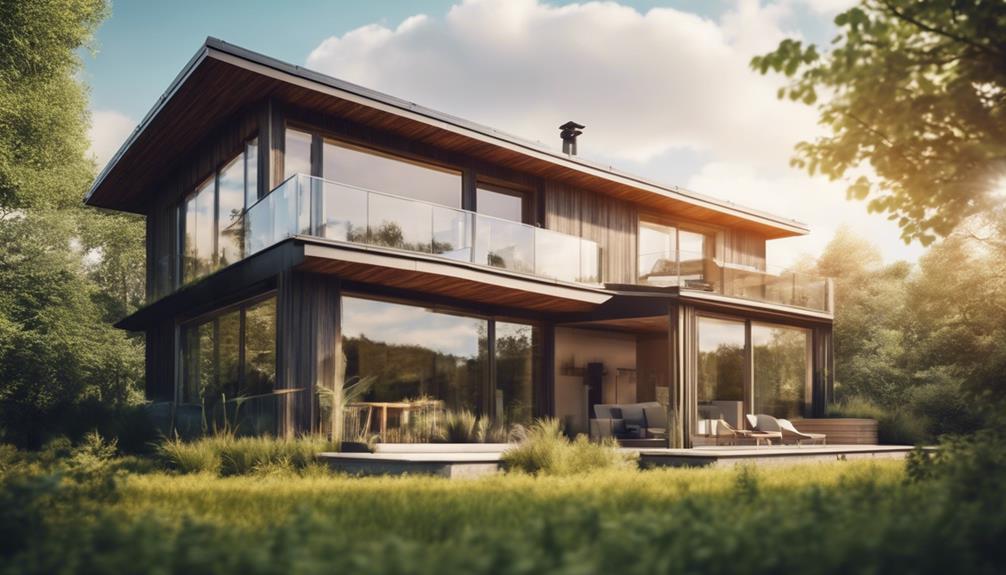Start by picking a spot close to buses or trains and where the sun shines a lot. This will help you save on travel and energy costs. Then, plan your budget for building in a green way. Keep in mind that you might save money in the long run.
Choose materials like bamboo or used steel. These are good for the environment and can still make your home look great. Try to make your home energy efficient. This means it uses less energy to do things like heat up or cool down.
Use stuff from nature to keep your home cool, like insulation. A smart ventilation system can also help. This means having windows or vents in the right places to let fresh air in and out.
Solar power is another great idea. You can use the sun's energy to power your home and keep it warm.
All these steps can help make your home more eco-friendly. They can lower the amount of carbon dioxide your home produces. This is better for the environment.
Keep reading to learn more about how to make your home eco-friendly and affordable at the same time.
Key Takeaways
- Pick a spot to live that's close to places like schools, stores, and bus stops. This helps lower pollution.
- Have a plan for your money. Using green building methods might cost more now, but it'll save you cash in the future.
- Choose items that are eco-friendly and have been used before or can be used again. This is good for our Earth.
- Make sure your home has things like solar power and systems for cool air that don't use a lot of energy. This helps cut down on electricity use.
- Use design ideas from passive houses. These are homes that don't need a lot of power and are good for the environment.
Identifying Suitable Locations
Looking for the perfect place to build your affordable, eco-friendly house? Think about places near bus or train stations. This can help you use your car less, which is good for the planet. You'll be helping to keep the air clean, which is a big part of being sustainable.
Choosing a place where there are already buildings and services can save you money and also help the environment. This means less building work is needed, which is better for nature. Plus, being close to things like stores or schools makes life easier, and it fits in well with your goal to be more green.
Another thing to think about is how much sunlight a place gets. If you pick a sunny spot, you can use the sun's heat and light in your house. This is a smart way to use less electricity.
Budgeting for Eco-Friendly Homes
So, you're ready to make your home more eco-friendly? Great!
But, how much will it cost? Let's break it down.
First, we need to think about green construction. This means building a home in a way that's good for the environment. It might cost a bit more, but it's worth it.
And don't worry, we're here to help you figure it all out. We'll show you how to plan your money to make your home as green as possible, without breaking the bank or losing sight of your eco-friendly dream.
Green Construction Cost Analysis
Understanding how much it costs to build a green house might sound tough, but don't worry! By closely looking at the costs, you'll see that investing in an eco-friendly house is a smart move.
Yes, building a green home might be a bit pricier at the start. But, the cool thing is that these homes are designed to save energy, which means you'll spend less money in the long run.
With the help of design experts, you can plan out a budget that suits your needs. Plus, there are lots of funding options and rewards for building green homes. So, you won't have to bear all the costs on your own.
Sustainable Materials Shopping Guide
Let's dive into the world of shopping for nature-friendly products, a key part in planning for your green home. This doesn't only help the Earth a lot, it also helps you save on power bills.
Choose stuff like wood that's been used before or metal that's been recycled. Both are good for the Earth and good for your pocket. Use natural insulation to make your home cozy and keep your power bills low.
Try using paints that don't have a lot of chemicals and eco-friendly roofing, which helps keep your home's impact on the Earth light. Try to buy stuff from local stores and forests that are well-managed. This helps your local area's money stay local, and makes sure that trees are being used wisely.
When you use these green tips, you're not only making a home that's easy on the budget and comfy to live in, you're also becoming part of a group that wants to keep the Earth healthy. Your home isn't just a home, it shows what you believe in.
Choosing Sustainable Building Materials

When we talk about sustainable building materials, we're talking about things like bamboo, recycled steel, and even sheep's wool. These materials are really important if you want to build something that's good for our planet.
It's also a good idea to pick materials that have low VOCs. This means you're not only making a design that uses less energy, but you're also making a healthier place to live. Try using green roofing like sedum. It's pretty to look at and helps keep the temperature just right, which means you'll use less energy.
Recycled materials are great too. They're not just cheaper, they're also better for the environment. When you use a reclaimed brick or a recycled steel beam, you're helping our planet.
Another good option is sustainable timber from managed forests. When you use this kind of wood, you're not only building a house, but you're also helping to save trees for future generations. Bamboo is another good choice because it grows really fast.
Choosing sustainable building materials is more than just building a house. It's about choosing to live in a way that's good for our world. So let's build not just a house, but a future that's good for everyone.
Incorporating Energy Efficiency
Making your home more energy efficient is a smart choice. It can cut down your energy use by half compared to regular homes. One way to do this is by using passive solar design. This means arranging windows smartly and using special materials that can absorb heat. These can trap sunlight for heating and lighting your home. It's like teaming up with nature.
Another important step is to insulate your home properly and seal any gaps that let air escape. This can help you save up to 20% on your heating and cooling bills each year. That's because it keeps the warm or cool air inside and blocks out the outside weather. With the right methods and materials, it's a realistic goal.
Choosing appliances that use less energy and being smart about your lighting can also make your home more eco-friendly. This can lower your energy use and save you money. And don't forget about renewable energy like solar panels. These can help your home produce its own electricity and cut down on how much you need from the power grid. Making your home energy efficient is like making it work for you, not against you.
Utilizing Renewable Energy Sources

In making your home work smarter, don't forget about natural energy sources like the sun and the wind. For example, solar panels can help lower your electricity bill. Think about it like this: your house uses the sun's light and turns it into power. This can help cut down what you pay for electricity.
Wind power is another way to be environmentally friendly. Wind turbines make electricity from the wind. Imagine a light wind making big blades turn, creating power for your home. When you use renewable energy, you're not only saving money, but also helping to reduce harmful gases and create a cleaner future.
Next up, let's chat about smart tech. With the right gadgets, you can keep track of your energy use and make your natural energy sources work better. You'll know exactly how much power you're using and making, which gives you control and helps you save money over time. It's not just about saving money, but about being part of a solution that's good for our planet.
Implementing Intelligent Landscaping
Let's learn about smart gardening and how it can make your house more eco-friendly and beautiful. You can bring a lot of different animals and insects to your garden by simply choosing local plants. These plants are easy to take care of and require less water, helping save energy and create a healthier environment.
Imagine turning your backyard into a garden where you can grow your own vegetables. This not only gives you fresh food to eat, but also helps the environment by reducing harmful emissions. By growing your own food, you're helping build a better future for our planet.
Another cool way to make your garden eco-friendly is by collecting rainwater. You can use this water to help your plants grow, saving valuable water resources and making your garden self-supportive. This is called smart gardening, and it's something you can do right at home.
Embracing Passive House Design Principles

Think about living in a house that's a champ at saving energy. This is what Passive House Design is all about. It's about making your home super comfy while using very little energy. Plus, it's a cheap way to save on your energy bills and help the planet.
The secret to Passive House design is really good insulation and making sure there are no leaks in your house. This means your house stays warm in the winter and cool in the summer. So, you're comfy all year round and save energy too.
Next up is how the house breathes. In a Passive House, there's a clever system that moves fresh air around your home. You don't need to use big energy-eating air conditioners or heaters. The house works with the way air naturally moves, not against it.
And let's not forget about the sun. With smart design, a Passive House uses the sun's light and warmth to help reduce how much energy your home uses. When you choose Passive House principles, you're making a smart choice for your money and the planet. So, why not make your home a shining example of green living and comfort?


Leave a Reply